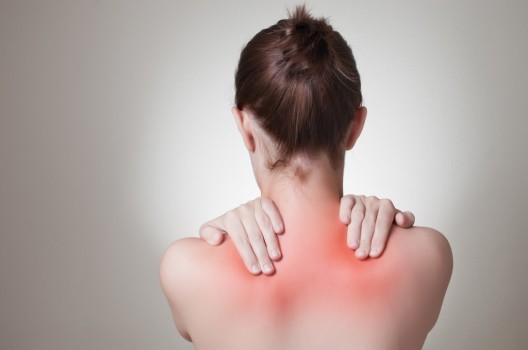Inflammation is a response to pathogens, chemical, or based onneurogenic loops. The methanolic solution of Mitragyna speciosa has anti-inflammatory properties. Intraperitoneal administration of an M. speciosa extract was able to inhibit the development of a carrageenaninduced paw oedema with a maximal inhibition during first 3 h after the challenge. The solution may exert its anti-inflammatory effect by inhibiting the synthesis, release and action of a number of hyperalgesic mediators. Thereby, it suppresses the early phase of acute inflammation. Arachidonic acid and its metabolites can be responsible for the inhibitory activity of the extract for a period of 4 h. Daily administration of the M. speciosa extract was also able to inhibit the growth of granuloma tissue as characterized by proliferation of modified macrophages, fibroblasts and highly vascularized and reddened mass tissue. (Zurina, 2013)
Kratom leaf and Kratom extracts have been shown to mildly inhibit the body’s ability to feel pain, as well as having mild, anti-depressant, and muscle relaxant effects. The key word here, is mild. For most humans, the painkilling effect of Kratom was on par with over the counter medications like aspirin or ibuprofen.
Side effects of Maend Da
From a practical standpoint, taking five grams of Kratom instead of a few hundred milligrams of aspirin, is not going to make sense for most people. If it simply possessed anti-inflammatory and analgesic properties, nobody would be interested in Kratom.
Besides the aforementioned mild pain relief, it was noticed a slight opiate-style body high, and a very pronounced mood elevation. We would imagine that Kratom could successfully be used as an anti-depressant. It also has a stimulant effect that is unlike prescription opiates and generally the opposite of anti-depressants. At lower doses, I didn’t have the drowsy feeling that would normally accompany a traditional opiate-based painkiller.
From a practical standpoint, Kratom probably has very little potential as a “social” drug. Dumping a tablespoon of powder in your mouth isn’t really the same as passing a joint, and putting ten grams of powder into capsules can get time-consuming.
Some users have say that the pain relief allows them to train harder, heavier, and for longer. So anecdotally, we could say that a strong trend for the use of Kratom (as a painkiller) athletics…
With that in mind, Kratom has proven effective in alleviating withdrawal symptoms from central nervous system depressants like opiates and alcohol, and I would suspect that it has utility in treating addiction to painkillers also.
You could train using kratom, and you cannot notice any change in either soreness or recovery and it didn’t seem to have any effect on strength or stamina. This is partly why it’s gotten popular with athletes, because although it appears to work on the opioid receptors to dull pain, it doesn’t seem to negatively inhibit performance.
Despite its popularity, there are still some unanswered questions regarding its potential side-effects. Research in this area is lacking, although there strong evidence to suggest that case reports of negative effects have been greatly influenced by user polypharmacy (i.e. people damaging their bodies, or even dying with Kratom in their system, were almost always found with traces of something else in their system).
The spoil-sports over at the World Anti-Doping Agency have already placed Kratom on their monitoring list, and its use is banned in competition (its most logical use for performance enhancement). Naturally, it can be detected in urine, but a typical employer or sporting organization isn’t testing for it.
Unfortunately, the legal status of the herb is somewhat up in the air. The FDA has issued an import alert (meaning they’ll stop it at the border if anyone tries to bring it in), though it’s not illegal or banned per se.
On the state level, Tennessee, Vermont, New Jersey, and Wyoming have banned it’s sale, but that’s irrelevant if someone buys it online from another state. There is more restrictive legislation in the works, and a lobbying group has been started by Kratom sellers and enthusiasts to keep it (sort of) legal.
The various alkaloids that it contains and it complex interactions together promote these health benefits to its users. Some of the alkaloids which specifically help in giving the herb its anti-inflammatory properties are:
- Epicatechin: Its antioxidant properties can promote overall health. Its interactions with the lipid system can also improve longevity. Its physical performance benefits stem from its mitochondrial enhancement properties. Epicatechin promotes a lean body composition as well. Epicatechin can promote healthy visual and spatial memory by upregulating genes associated with learning.
It also has the following properties- Antioxidant, antihepatitic, antiaggregant, antiseptic, antidiuretic, anti-mutagenic, antiperoxidant, and antiviral.
- Rhynchophylline: This anti-inflammatory alkaloid comprises of about 1% of the total alkaloid content of the leaf. It is rich in other properties like- Vasodilation, antiaggregant, antihypertensive, antipyretic, calcium channel blocker, anti-arrhythmic and anthelmintic.
References:
– http://www.phytochemicals.info/phytochemicals/epicatechin.php
– Zurina, H., Mustapha, M., “From Kratom to mitragynine and its derivatives: Physiological and behavioural effects related to use, abuse, and addiction”, Neuroscience and Biobehavioral Reviews 37, pp. 138-151, 2013.
– https://www.ncbi.nlm.nih.gov/pubmed/19648761

